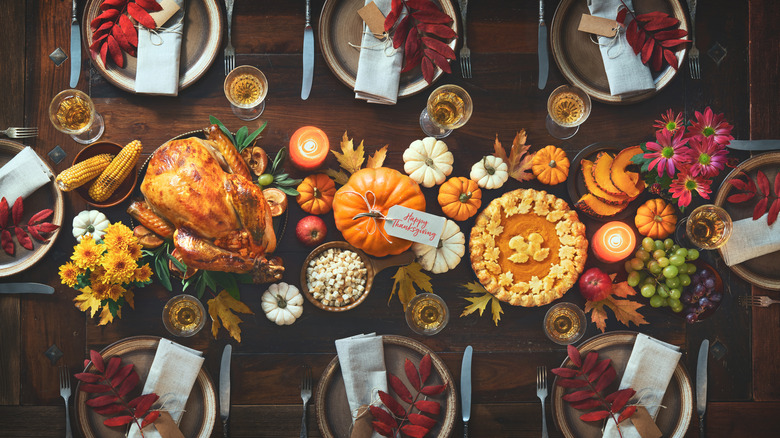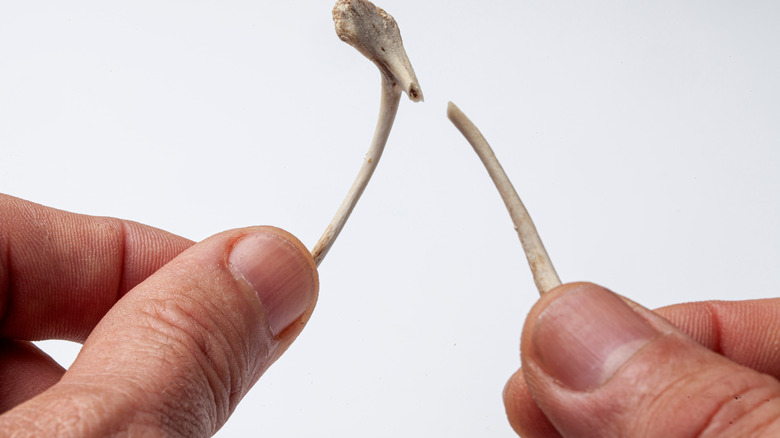The Real Reason We Break The Wishbone On Thanksgiving
Traditions abound on Thanksgiving, from the food put on the table to how families around the United States spend the day. Unsurprisingly, the big event of the meal is turkey for 86% of the celebrants, according to a YouGov survey, followed by mashed potatoes and stuffing (75%) — with almost two-thirds of merrymakers topping all that scrumptiousness off with pumpkin pie.
While the day typically embraces family togetherness, it also is the time of year to watch the Macy's Thanksgiving Day Parade with its giant inflatables and assortment of marching bands on TV (or for the intrepid, on the streets of New York City) or root for your favorite football team during game time.
While napping also can play a key part in Thanksgiving gatherings, some people prefer to get more physical — and participate in a turkey trot, a fun run to prep for all that feasting. If you don't like crowds, you can even do this virtually and post your results. But don't count on burning all those calories with one event. "Most turkey trots are around three miles, meaning you're likely to only bun around 300 calories during a race," as Kevin DuPrey, a sports medicine physician, told Crozer Health. "That doesn't equal the average Thanksgiving meal, which can easily exceed 3,000 calories if you go for second helpings."
Thanksgiving also offers the opportunity for someone to make a special holiday wish — another yearly tradition that practically guarantees good luck for the new year (in theory, at least).
The magical wishbone
This is how it works: After the turkey is carved, the Y-shaped wishbone is cleaned and laid out to dry. After the meal, two guests are selected to break the wishbone. According to tradition, the person with the bigger piece receives their wish as well as some good luck for the next year, according to EF Academy Blog. This tradition dates back to ancient times. The Romans began pulling apart chicken clavicles to enhance their fortune, believing the animals contained divine(ish) capabilities. The wishbone made the power accessible to them. Participating in this ritual became so popular that wishbones became limited, necessitating that people break them in half (from My Recipes).
Somewhere along the line, the rule became that only the one possessing the bigger piece could obtain the gifts of the wishbone. The loser would go home empty-handed. This version of the custom became popular in England — and, by the 16th century, the wishbone was called a "merrythought." When the pilgrims journeyed from England to Plymouth, Massachusetts, they brought the tradition with them, and it was even incorporated into that very first Thanksgiving in 1621. The exact menu of what appeared on that first table is not fully known. Two surviving documents detail some of it, telling of a feast of deer, assorted wildfowl, cod, bass, corn bread and porridge, reported Food 52, but not pumpkin pie. Perhaps, the victor of that first merrythought pull craved a sweeter ending and spent his wish envisioning future Thanksgiving treats.

